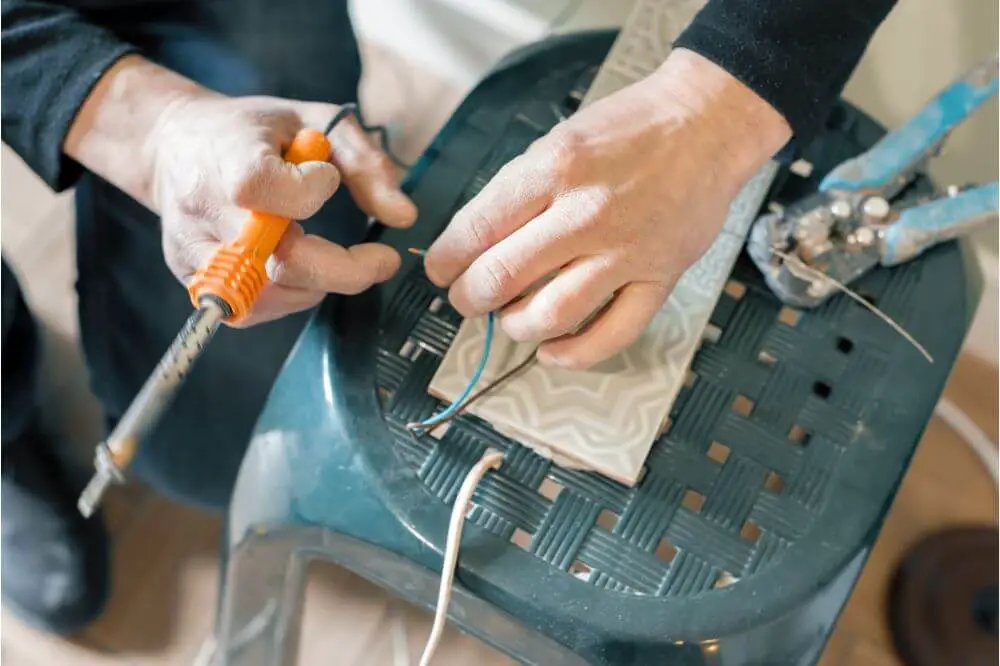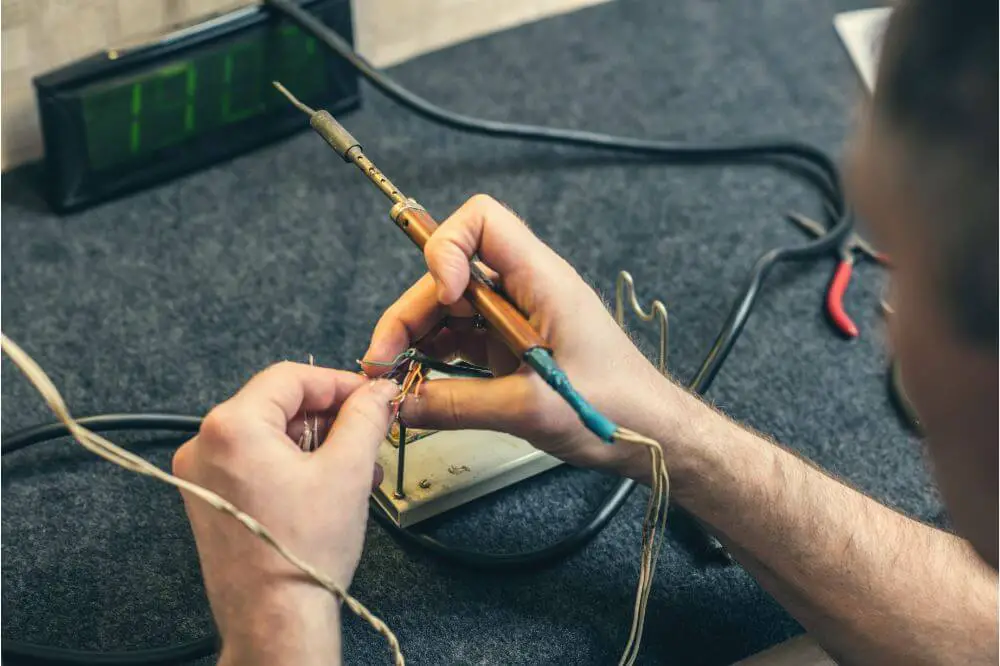A soldering iron tip is considered the most critical component when it comes to the tool’s performance. If your soldering iron tip isn’t performing its primary function of transferring heat to the connecting point, the soldering iron will not be reliable.
There are several factors that affect a soldering iron tip life expectancy. The longevity of a soldering iron tip will highly depend on proper maintenance, temperature, cleaning, project you are working on, and tip configuration.
When you take great care of your soldering iron tip, you will be able to boost its performance significantly from your soldering iron to the tip. In addition to that, you will boost its longevity by avoiding situations that will cause a soldering iron tip to melt. Therefore, in this article, we shall be discussing; why does my soldering iron tip melt.
What Causes A Soldering Iron Tip To Melt?
There are various situations that are known for causing the melting of a soldering iron tip. Some of these causes include;
Voltage
When working on any project that requires soldering, you should always consider using the correct voltage. Ensure that your electrical line offers you the correct voltage for your soldering iron along with the right plug configuration.
Usually, most of the soldering iron tips have been designed to handle a slight variance in voltage. However, working with an electric line that supplies high voltage consistently is not recommended.
Continuous supply of high voltage to your soldering iron tip causes the tip to become hot and significantly reduces its life expectancy. When this issue persists, your soldering iron tip can start melting.
Adjusting soldering temperature to a solder
The primary function of a soldering iron tip is to transfer heat that helps in melting a solder. However, the higher the tip temperature, the faster it oxidizes. When working with you soldering iron at a temperature of 875 degrees Fahrenheit, the iron tip will oxidize twice as fast as a tip at 700 degrees Fahrenheit.
It would be best if you considered adjusting the soldering temperature to the minimum temperature required for the solder’s melting and allowing it to flow smoothly. A soldering iron that features or works with rheostats will be of great benefit, allowing you to choose the right temperature for melting your solder.
Since different solder require different levels of temperature to melt, here are some of the key consideration you need to keep in mind:
- 50/50 solder. This alloy features 50% lead and 50% tin and it melts at 417 degrees Fahrenheit. It melts at a slightly higher temperature than 60/40. However, below 417 degrees, the solder will remain partially liquid, and it tends to cool at 361 degrees Fahrenheit. When working with this solder, it is highly recommended that you maintain this particular temperature range. When the excess temperature is used, your soldering iron tip might end up melting.
- 60/40 solder. It consists of 60% tin and 40% lead, and it tends to melt at 374 degrees Fahrenheit. However, it cools and becomes solid at 361 degrees Fahrenheit. This means that you have a working temperature range of 13 degrees. Working with a temperature higher than the stipulated range will not be effective and will have a severe negative impact on your iron tip.
- 63/37 solder. The solder consists of 63% tin and 37% lead, and its melting point is 361 degrees Fahrenheit while it cools at the same temperature. This means that its working range is 0 degrees. The solder is often referred to as eutectic alloy, meaning that 361 degrees Fahrenheit, you can easily go from solid to liquid and vice versa by just applying or removing the heat source 361 degrees Fahrenheit. Working with this solder will not feature any adverse effect on the iron tip since it melts and solidifies at the same temperature.
Temperature cycling
As a solderer, it is highly recommended that you avoid temperature cycling. Keeping the tip of your soldering iron is vital. However, when you wipe it consistently with a wet sponge can result in early failure and reduced life span of your soldering iron tip.
Usually, when wiping your soldering iron tip, the temperature levels tend to rise and fall drastically. This is not advisable since there are different metal layers in a soldering iron tip that will repeatedly contract and expand. As the cycle continues, you will cause metal fatigue, and your soldering iron tip will ultimately collapse.
You should note that the more you wipe your soldering iron tip, the more it becomes stressed. To help prevent this, you might consider using a brass wool coil to wipe the tip of your soldering iron. Unlike a wet sponge, the brass wool will not cause a drastic falling and rising temperature.
Melting your solder
When melting your solder, you should avoid pushing it into a soldering iron tip. It would be best if you did not force your solder to melt or rub the soldering tip against the new joint while heating it. This often causes a soldering tip to wear off easily and even melt when the issue persists.
However, it would be best if you allowed your soldering iron to heat until it attains the soldering temperature required. Once that is done, you can start the soldering process without having to force your solder to melt.

Final Verdict
When working with your soldering iron, you should always consider tinning the tip. This will help in protecting it against melting and other causes of tin failure.
In addition to that, the type of solder used while soldering your project tends to have a significant impact on your soldering tip. In most cases, lead-free solder is well-known for speeding up tip erosion. To help protect your soldering against this, you should always consider cleaning your tip with brass wool.
Brass wool is considered the best since wet sponge will cause a drastic change in temperature and will result in the collapse of your soldering iron tip. Moreover, it would be best if you always unplugged your soldering iron during breaks; this will protect the tip from unnecessary wear.
Why does my soldering iron tip melt be one of the frequently asked questions, and as we conclude this article, we hope you found it beneficial. By adhering to the tips discussed in this article, you will be able to take care of your soldering tip with the utmost ease.


